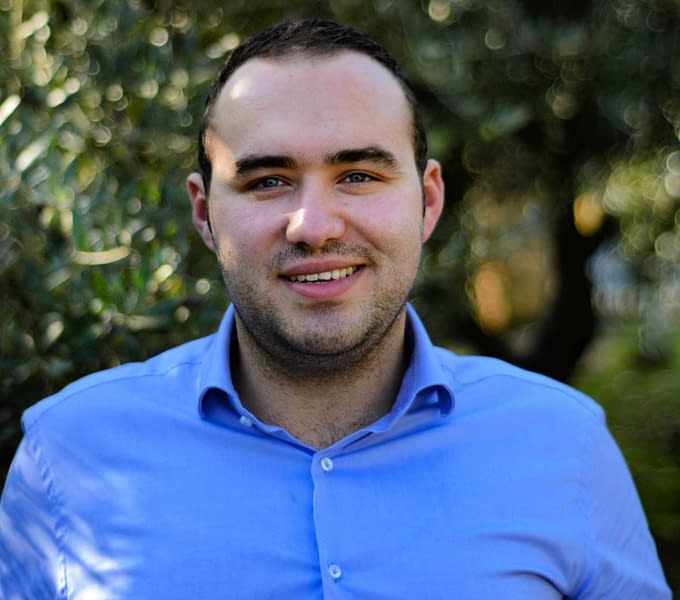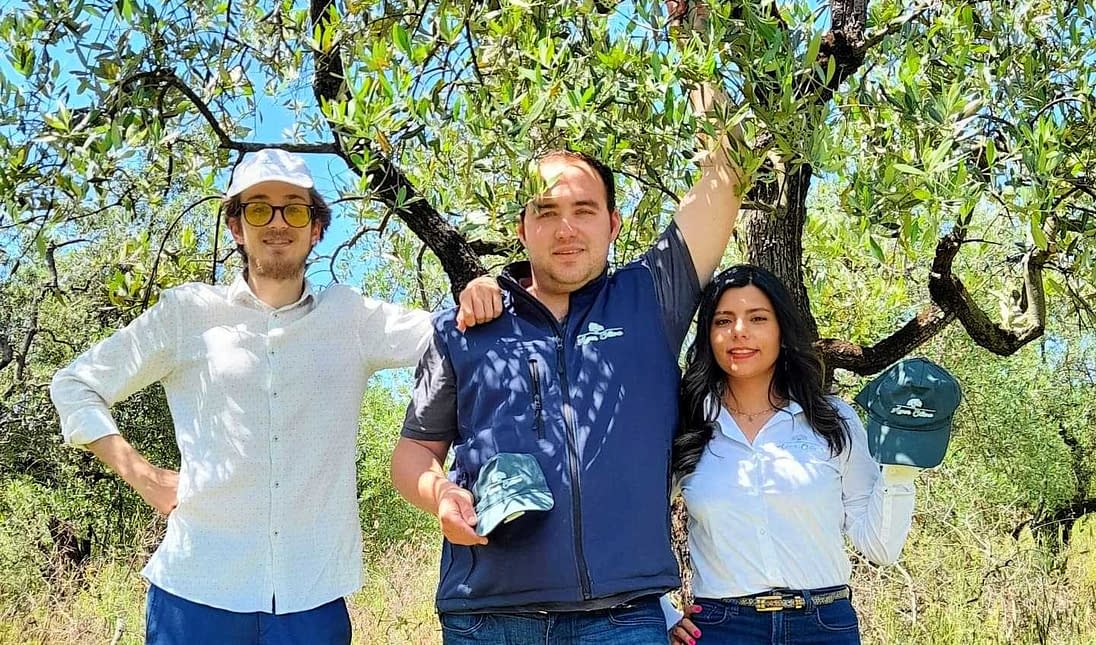Restoring Abandoned Olive Trees at Leonardo da Vinci's Home
Efforts are underway to restore the long-abandoned olive trees located around the birthplace of Leanardo da Vinci in Montalbano, Tuscany.
The recovery of the trees and many other abandoned groves in the central Italian region is the goal of a recently founded agricultural startup that focuses on restoring historic olive orchards.
We decided to start this project because there are so many abandoned orchards. Official data show that in the whole of Tuscany, there are around four million trees that need to be recovered and restored.
Olive trees have grown in Tuscany and Vinci, a small town just west of Florence, since their introduction in the Fifth or Sixth centuries CE. For the past 1,500 years, they have become an integral part of Tuscany’s economy and culture.
See Also: Rehabilitating Olive Trees in Aragón to Stem Spain’s Rural Exodus
When Da Vinci was born in 1452, olive trees dotted the surrounding countryside and were considered to be a valuable feature due to their low numbers and the oil they produced. A few of the trees that currently share the gentle Vinci slopes with vineyards likely produced olive oil eaten by the polymath.
Since the 15th Century, the number of olive trees and other crops in the town has steadily increased. After falling into a state of abandonment, hundreds of supporters of Ager Oliva have invested in the recovery of the olive trees.
In exchange for their contributions, Ager Oliva gives them the olive oil produced by those trees. In addition, the company labels the bottles with the name chosen by the contributor, maps them on their website, releases an adoption certificate for the trees and allows supporters to visit them whenever they like.
How Ager Oliva solved the problem with the abandoned groves of the Da Vinci birthplace is increasingly being replicated around Tuscany.
“Many choose to adopt an olive tree and to give the adoption as a present to their loved ones,” Tommaso Dami, an economist, olive farmer and Ager Oliva’s founder, told Olive Oil Times. “We decided to start this project because there are so many abandoned orchards.”

Tommaso Dami
“Official data show that in the whole of Tuscany, there are around four million trees that need to be recovered and restored,” he added. “That is why we worked on a business plan that allowed us to progressively expand our area of intervention.”
In the first year of operations, the company has seen the number of its restored olive trees jump from 600 to 1,200, with a growing number of requests coming from owners who can no longer take care of their groves, a well-known phenomenon throughout Italy.
Abandonment is mainly due to an ageing generation of farmers, the reduced profitability of small-scale olive oil production and the growing challenges presented by climate change and diseases.
“The recovery intervention in the Vinci orchard is quite relevant,” Dami said.
Over time, other plants grew around the trees and sometimes on the trees themselves, with branches often entirely covered.
“We start with the mulcher in the area surrounding the trees, then we proceed with the help of small equipment, such as grass trimmers to clean around the trees,” Dami said. “From that moment on, we intervene by hand to remove all extraneous vegetation.”
“Once the cleaning is done, our agronomist decides which organic fertilization strategy to adopt and how to proceed to get rid of pathogens,” he added.
Some of the trees have grown so tall over the years that they have become increasingly complicated to restore.
“Sometimes we have to intervene on trees that are more than 10 meters tall, which is too high to be managed correctly,” Dami said. “Once restored, trees are pruned according to the polyconic vase training system.”
The technique accelerates the return of the trees’ ability to yield fruit, according to Italian olive tree pruning champion Riccardo Macari.
“With this approach, we encourage the production of vegetative branches in the lower part of the canopy while facilitating harvest and the implementation of all the other agronomic practices during the year,” he told Olive Oil Times in a 2017 interview.
“We respect the plant’s equilibrium and development” by promoting the development of fruity branches, rather than suckers and water sprouts, he added.
The restoration process also produces plenty of olive wood, which Dami said can be a logistical challenge to give away.
“It is not as easy as one may think,” he said. “It really is a lot of wood, and, up to now, we have not been very lucky in finding interested parties.”
Dami hopes some pizzeria with its wooden stove will soon come to the rescue.
Throughout the restoration process, Ager Oliva strictly uses organic and bio-elements protocol.
“All of our activity is organic, which is the best option, of course, even if recovery times might be a little longer and intervention might cost more,” Dami said. “You can’t go there with some chemicals, spray them around and solve the problem.”
“You have to take care of the trees, combat the fruit fly, and often spray organic compounds on the trees every three weeks during specific biological cycles,” he added. “That is our top priority, to have a sustainable farming activity, both economically and environmentally, respecting the territory, the land and the people who live there.”
The growing number of olive tree adoption supporters can choose the plant they want to adopt and pay €49 or €59 per year to recover one olive tree, with the exact sum depending on the state of the tree.

Ager Oliva’s managing team
“We were founded online, but since we started, we hoped to host an event among the olive trees,” Dami said. “Last year, just a few months after we started, we were about 100 people having bruschetta and tasting excellent extra virgin olive oil in a restored orchard.”
“Some of these early adopters consider their trees as family members; some are adopting more than just one tree while some companies adopt many of them,” he added.
The company has distributed 1,200 liters of extra virgin olive oil to its members in the current harvesting season.
“Our projections are to double the number of adoptions in the coming months and end 2022 with at least 3,000 adopted olive trees under Ager Oliva management,” Dami said.
However, he admitted that it would not be easy to go wherever an intervention is needed.
“If we look at areas such as Lucca or Florence, we have one million trees there that would need restoring, hundreds of thousands near Arezzo and 20,000 or 30,000 in Pistoia,” Dami said.
“We hope many trees in public lands, which are today on sale for very high prices incompatible with the market, will be progressively given to initiatives that can bring them back to production,” he added. “Many of those trees are historic orchards. It is a pity to see them abandoned.”
Some local municipal administrations may share Dami’s sentiment. They are working to change the traditional approach.
Florence recently launched an initiative to allow private citizens or associations to adopt one or more olive trees in the area by formally committing to taking care of them. Once assigned their trees, adopters are entitled to produce their own extra virgin olive oil.
The Tuscan regional assembly also has recently adopted a resolution that paves the way for new restoration operations to take place in abandoned fields and olive groves in the region.
“One of the things we are looking at is to safeguard and protect biodiversity,” Dami said. “We are now crowdfunding an initiative to bring support irrigation to those olive orchards where that is feasible. With the rising summer temperatures and the lasting summer drought, plants and their environment will greatly benefit from specific targeted irrigation interventions.”
“The lack of water in our region greatly affects yields,” he concluded. “During summertime, we have seen orchards losing up to 60 percent of their olives because of heatwaves.”


Commenti
Posta un commento